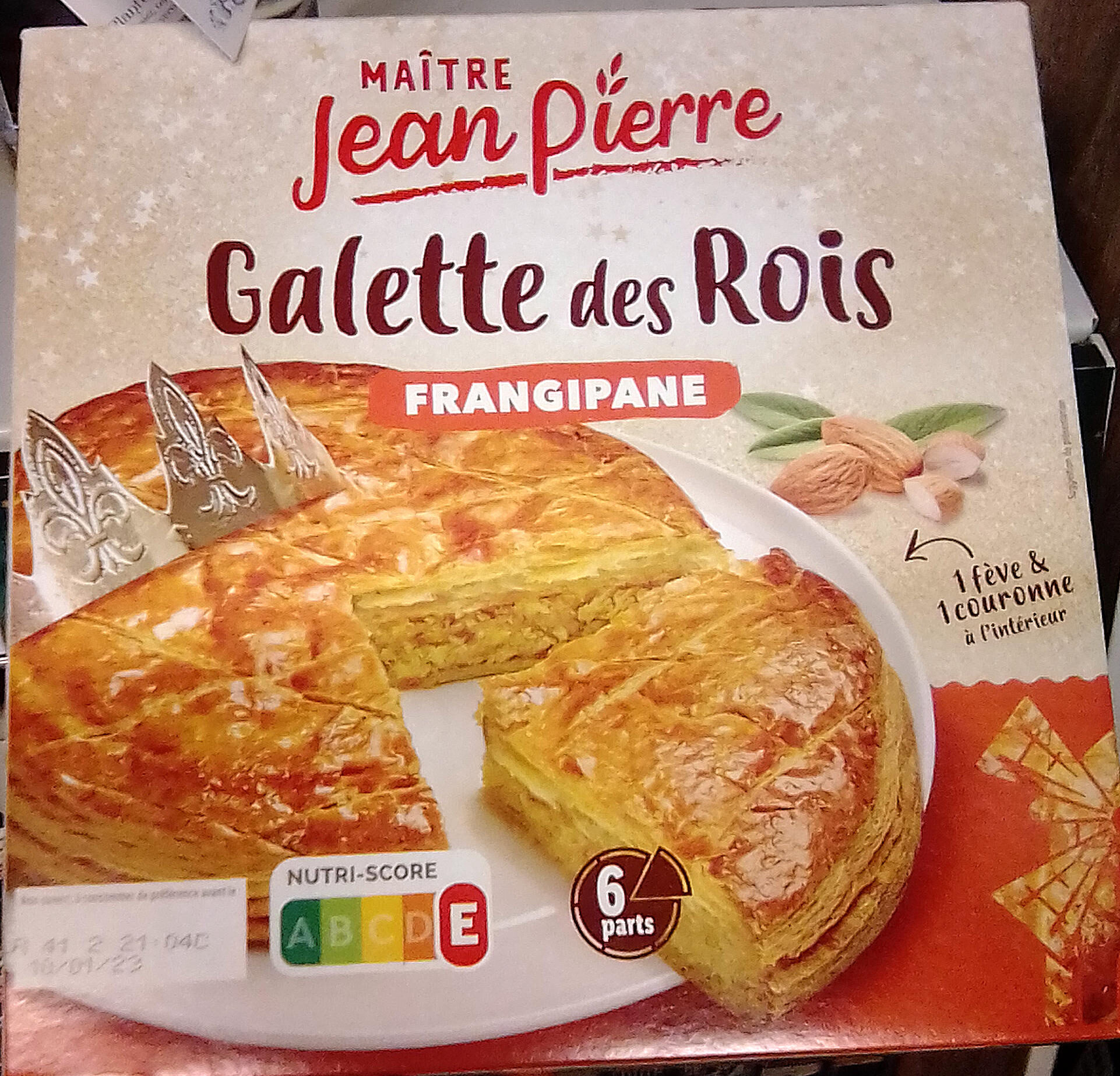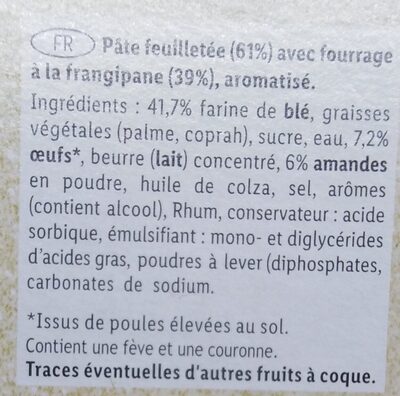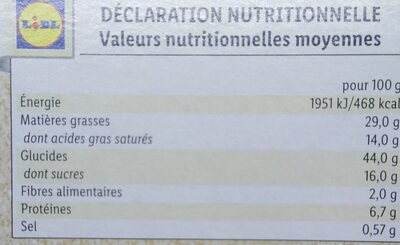Galette des Rois - Frangipane - Maître Jean Pierre - 400 g
Ambiguous barcode: This product has a Restricted Circulation Number barcode for products within a company. This means that different producers and stores can use the same barcode for different products.
×
This product page is not complete. You can help to complete it by editing it and adding more data from the photos we have, or by taking more photos using the app for Android or iPhone/iPad. Thank you!
×
Barcode: 20070472
Common name: Pâte feuilletée avec fourrage à la frangipane, aromatisé
Quantity: 400 g
Packaging: Cardboard, fr:Etui en carton, fr:Film en plastique
Brands: Maître Jean Pierre, Lidl
Categories: Snacks, Sweet snacks, Biscuits and cakes, Pastries, King cakes, Twelfth Night cake with almond paste
Labels, certifications, awards:
Nutriscore, Nutriscore Grade E, Triman
Stores: LIDL
Countries where sold: France
Matching with your preferences
Report a problem
Data sources
Product added on by tacite
Last edit of product page on by bugmenot.
Product page also edited by alexg, aurelien31, date-limite-app, ecoscore-impact-estimator, kiliweb, lepetitcurieux, maass, openfoodfacts-contributors, packbot, quechoisir, roboto-app, yuka.WmZrdE9xOHV1S1lGdHNCbjIwL3R3TkVyeDdTVFdHeVZkOXBQSVE9PQ, yuka.ZTZSWkRyd3VqZmNGaHZObitoaUUvSTFvNVpDc1dWbnRGdUFlSVE9PQ, yuka.sY2b0xO6T85zoF3NwEKvlm9HQ935_BP2KiDgv1Cp4-iUJJHZW9d2-pfACqs, yuka.sY2b0xO6T85zoF3NwEKvlnVZVuj5oy_dDQLQnWSx6tGQMLLGP49RvdnBMqg, yuka.sY2b0xO6T85zoF3NwEKvlnVgCuWE_T7oL0Lvk2eL18uWE7C0RtFX65jYaqs.












